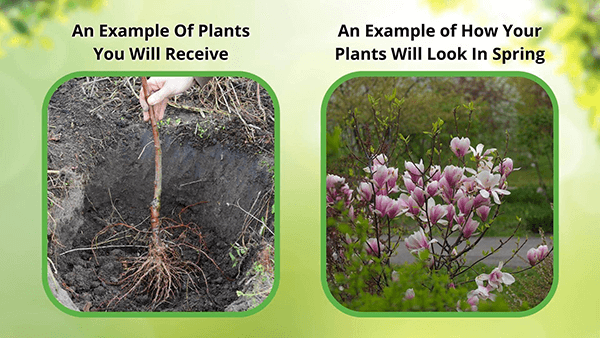



Removes & Absorbs Toxins
Improves Air Quality
Low maintenance & easy to grow
Buy Weeping Willow Trees Online Wholesale
The Weeping Willow is one of the most beloved ornamental trees, instantly recognizable by its arching, pendulous branches that sweep gracefully toward the ground. Its cascading canopy of soft green foliage creates a calming, picturesque presence in any landscape. Known for its rapid growth and adaptability, this tree is a timeless choice for homeowners who want a tree that brings shade and beauty in just a few years.
Features & Advantages:
-
Iconic Beauty - Graceful, draping branches form a curtain of green that adds instant charm.
-
Quick Shade Provider - Reaches 30-40 feet tall and wide at maturity, growing several feet per year.
-
Pollinator Friendly - Produces yellow catkins in late winter that attract bees, butterflies, and birds.
-
Adaptable Tree - Tolerates clay, sand, and loamy soils as long as moisture is available.
-
Easy to Maintain - Requires little care once established, thriving in sunny, moist locations.
Growing Needs
-
Sunlight: Full sun for best growth and disease resistance
-
Soil: Moist, fertile, well-drained soil preferred
-
Watering: Loves water; ideal near ponds or streams; extra watering required in dry spells
-
Mature Size: 30-40 ft. height and width
-
Growth Rate: Very fast, offering beauty and shade in just a few seasons
Best Landscape Uses of Weeping Willow Trees
-
Stunning focal tree for large yards, estates, or parks
-
Perfect near water features where roots can access constant moisture
-
Provides wildlife habitat for butterflies, pollinators, and songbirds
-
Excellent for erosion control on streambanks or moist low areas
Graceful, majestic, and full of character, this tree brings instant serenity and a classic pastoral look to any property. Its timeless beauty makes it one of the most sought-after shade trees for homeowners.
Weeping Willow Trees
Q: How quickly does a Weeping Willow reach maturity?
A: Weeping Willows are very fast-growing trees, often reaching their full size of 30-40 feet tall and wide in less than 15 years.
Q: Can I plant a Weeping Willow in any soil?
A: Yes, Weeping Willows adapt well to different soil types, including clay, sand, and loam, as long as the soil stays consistently moist.
Q: Do Weeping Willows need full sun?
A: Absolutely. Planting in full sun ensures healthy growth and reduces the chance of fungal problems.
Q: Are Weeping Willows good for small yards?
A: No, these trees are best for larger spaces since they spread up to 40 feet wide and have extensive root systems.
Q: What makes the Weeping Willow good for wildlife?
A: Its winter catkins feed pollinators early in the season, and its branches provide shelter for birds and butterflies.
Q: How much care does a Weeping Willow need?
A: Aside from regular watering during droughts and occasional trimming, this tree requires very little maintenance once established.
If you want drama in the garden, the Weeping Willow (Salix babylonica) is a classic choice, even though it is known as a short lived species. It is famous for those sweeping branches and generally prefers partial shade, especially near water.
Historically, this tree actually moved from Asia to Europe along the old trade routes before Carl Linnaeus finally classified it. It is a popular pick for landscaping because, with the tree growing so vigorously, you get quick shade and immediate impact in the garden.

This Is How Your Plants Will Look upon Delivery
Shipping date depends on the date displayed and chosen when you order from the product's page.
We do not offer warranties on products after 5 days past receiving your plants.
By signing up, you agree with our privacy policy.






